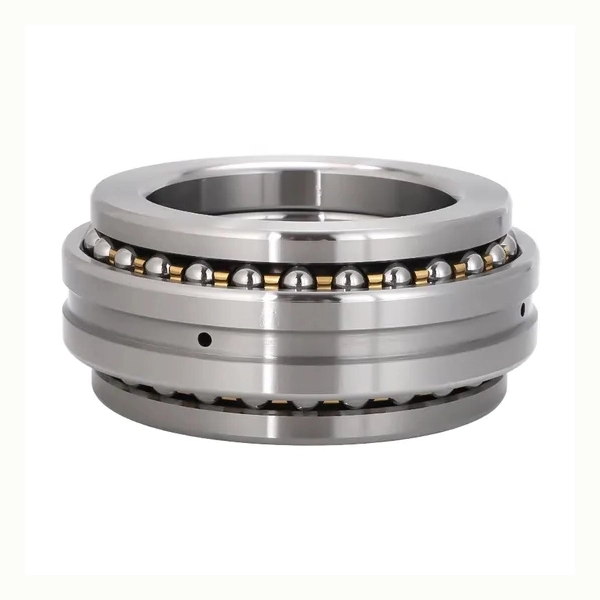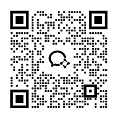What Industries Use Double-Direction Angular Contact Thrust Ball Bearings?
Double-direction angular contact thrust ball bearings are specialized components designed with two rows of balls in an angular configuration. This design allows them to handle thrust loads in both directions while accommodating radial forces. Their unique construction makes them essential in various industries where reliability, precision, and load-bearing capacity are crucial for rotational movement.


What Makes Double-Direction Angular Contact Thrust Ball Bearings Ideal for Heavy Machinery?
Design Features Contributing to Superior Performance in Heavy Equipment
Double-Direction Angular Contact Thrust Ball Bearings excel in heavy machinery due to their ability to handle bidirectional axial loads and radial forces simultaneously. Their precision-engineered raceways and optimized ball arrangements ensure balanced load distribution even under extreme conditions. In applications like mining excavators and construction cranes, these bearings provide essential support for rotating components. Their internal geometry maximizes contact area between balls and raceways, reducing pressure and minimizing wear despite high loads. Special cage designs maintain proper ball spacing and prevent skidding under varying speeds.
Applications in Mining and Construction Equipment
In mining, these bearings support massive slewing rings in excavators, allowing the upper structure to rotate while handling both the superstructure weight and digging forces. They're also crucial in tunnel boring machines where they withstand enormous axial forces. Construction equipment such as tower cranes utilize these bearings in slewing mechanisms, supporting the jib weight while handling dynamic loads during lifting operations. Concrete pump trucks employ them in swivel joints that must maintain perfect sealing while rotating under high pressure. Road construction equipment also benefits from their capacity to handle shock loads.
Challenges and Solutions in Heavy Industrial Applications
Major challenges include contamination management in dusty environments, addressed through advanced sealing technologies like multi-stage labyrinth seals. Lubrication presents another challenge, with modern bearings featuring enhanced surface texturing for improved lubricant retention. Installation and maintenance of large bearings require specialized handling equipment and precise alignment procedures. Manufacturers have developed hydraulic mounting methods and advanced condition monitoring technologies to address these issues.

How Are Double-Direction Angular Contact Thrust Ball Bearings Used in Aerospace and Precision Engineering?
Critical Functions in Aircraft Propulsion Systems
In aircraft engines, these bearings support main shafts that experience substantial alternating axial forces during different flight phases. They maintain precise shaft alignment throughout the flight envelope. Aerospace applications require specialized materials like vacuum-melted steel alloys that ensure consistent performance across extreme temperature ranges. Helicopter transmission systems also rely on these Double-Direction Angular Contact Thrust Ball Bearings to support primary drive shafts while accommodating complex force patterns.
Precision Requirements in Medical and Laboratory Equipment
Medical imaging equipment such as CT scanners incorporate these bearings in rotating gantry assemblies, where micrometer-level positioning accuracy is essential. Laboratory centrifuges rely on them to maintain stable operation at high speeds while supporting imbalanced loads. Robotic surgical systems perhaps demonstrate the ultimate precision requirements, where these bearings provide absolute positional accuracy while offering smoothness for natural tactile feedback to surgeons.
Innovations in Satellite and Space Vehicle Applications
Space applications present unique challenges, requiring bearings to function in vacuum conditions where conventional lubrication fails. Space-rated bearings utilize solid film lubricants like molybdenum disulfide instead of liquid oils. Satellite attitude control systems require bearings with extraordinarily low torque characteristics to minimize power consumption. Space launch vehicles use these bearings in propulsion components including turbopumps, where they must maintain precise clearances despite extreme conditions.

What Role Do Double-Direction Angular Contact Thrust Ball Bearings Play in Renewable Energy Systems?
Wind Turbine Pitch and Yaw Mechanisms
In wind turbines, these bearings support blade adjustment systems that continuously optimize angles relative to wind conditions. The massive blades create enormous bending moments that transfer to the bearings as axial forces. Yaw systems that orient the entire nacelle rely on these bearings integrated into large-diameter slewing rings. They must withstand extreme environmental conditions including temperature fluctuations and moisture exposure.
Solar Tracking System Requirements
Solar tracking systems use these bearings to provide smooth, precisely controlled movement without damaging fragile photovoltaic panels. The Double-Direction Angular Contact Thrust Ball Bearings must accommodate reversing forces between morning and afternoon operations while minimizing power consumption. Dual-axis tracking systems employ multiple bearings arranged to allow independent control of both rotational axes while providing stability against wind loads.
Tidal and Hydroelectric Power Applications
Tidal energy systems utilize these bearings in underwater turbines that must withstand harsh marine conditions. The bidirectional nature of tidal flows creates alternating thrust loads that match the design capabilities of these bearings. Conventional hydroelectric plants use them in turbine support structures to handle enormous thrust loads while maintaining precise shaft alignment. Pumped storage facilities present unique challenges as they operate bidirectionally by design.
Conclusion
Double-Direction Angular Contact Thrust Ball Bearings have established themselves as indispensable components across diverse industries requiring precise, reliable mechanical solutions under challenging load conditions. Their unique capacity to handle bidirectional axial forces while accommodating radial loads makes them ideal for applications ranging from heavy machinery to aerospace systems and renewable energy installations.

Luoyang Huigong Bearing Technology Co., Ltd. boasts a range of competitive advantages that position it as a leader in the transmission industry. Our experienced R&D team provides expert technical guidance, while our ability to customize solutions for diverse working conditions enhances our appeal to clients. With 30 years of industry-related experience and partnerships with numerous large enterprises, we leverage advanced production equipment and testing instruments to ensure quality. Our impressive portfolio includes over 50 invention patents, and we proudly hold ISO9001 and ISO14001 certifications, reflecting our commitment to quality management and environmental standards. Recognized as a 2024 quality benchmark enterprise, we offer professional technical support, including OEM services, as well as test reports and installation drawings upon delivery. Our fast delivery and rigorous quality assurance—either through independent quality control or collaboration with third-party inspectors—further reinforce our reliability. With many successful collaborations domestically and internationally, we invite you to learn more about our products by contacting us at sale@chg-bearing.com or calling our hotline at +86-0379-65793878.
References
1. Harris, T.A. & Kotzalas, M.N. (2023). Essential Concepts of Bearing Technology: Rolling Bearing Analysis (6th ed.). CRC Press.
2. Zaretsky, E.V. (2022). "Bearing Design in Machinery: Advanced Concepts of Rolling Element Bearings." Journal of Tribology, 144(3), 031704.
3. Chen, W.J. & Gunter, E.J. (2021). Introduction to Dynamics of Rotor-Bearing Systems. Trafford Publishing.
4. SKF Group. (2023). "Industrial Bearing Applications: Design and Implementation Guide." SKF Technical Publication.
5. Li, Y., Wu, W., & Zhou, X. (2024). "Performance Analysis of Double-Direction Angular Contact Thrust Ball Bearings in Wind Turbine Pitch Systems." Renewable Energy, 189, 456-468.
6. Hamrock, B.J., Schmid, S.R., & Jacobson, B.O. (2021). Fundamentals of Machine Elements (4th ed.). CRC Press.

